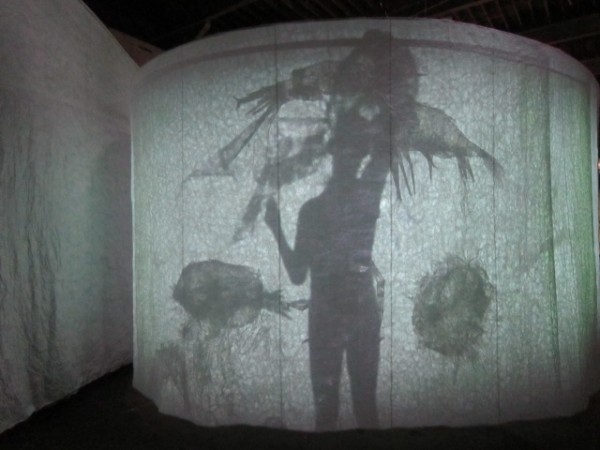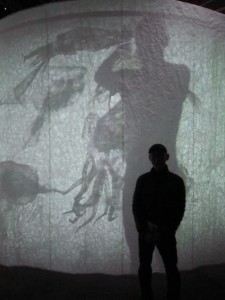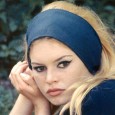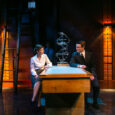How often do you stare blankly at an artwork – be it painting, sculpture, performance or installation – completely bewildered by the intentions of the artist?
The cryptically confusing written statement alongside a work often complicates its meaning even further.
But what if the artists themselves were available to guide you through their creative process and demystify the tangled web of meaning surrounding their artwork?
At the Biennale of Sydney I was lucky enough to meet Toronto-based artist Ed Pien, who took me on a tour of his work, Source.
Source is a towering paper labyrinth that combines installation, paper cuts, drawing and shadow play.
“I wanted it to be really huge, because it’s about water. I wanted it to be overwhelming and consuming, so that when you’re inside you would be engulfed and disappear,” Pien explains.
But the grand size and scale of Source belies its fragility, just like the world’s waterways.
“In our world there’s a contamination of the water, things are degrading, they’re getting sick and they’re dying. This whole piece is about transforming it.”
As people pass through Pien’s work, the delicate paper sheets answer to the movement, rippling like the tide. What a beautifully poetic articulation of how nature responds to the most minuscule forms of human intervention.
Within the spiralled interior of Source, the shapes of sea creatures are projected onto rippled sheets of mylar. These floating images are accompanied by the audio of Inuit throat singer Tanya Tagaq, a voice of haunting, grotesque beauty.
As a site-specific work created especially for Cockatoo Island, Source engages with the artworks that surround it. Peering through the hand-cut shapes in the paperwork, Monika Grzymala’s piece, coincidently titled The River, can be glimpsed.
“I’m going to show you the inside of the work now,” Pien announces. He weaves his way through the blue and white tentacles of rope suspended from the ceiling and leads us into the centre of his work.
“It’s kind of disconcerting to come in here and see no one. You’re expecting someone in here casting a shadow, but it’s all an illusion,” he says.
But how did he create this illusion of shadow play?
“I’ve actually videotaped myself with all these objects, and then projected the whole thing through the real objects,” Pien explains. “They’re kind of familiar, but they’re not.”
Source engages personally and politically with the theme of this year’s Biennale, All Our Relations. Accessibility to clean water, as well as humanity’s relationship with Mother Nature was weighing on Pien’s mind when he devised the work.
“In the Source, everything is connected,” he says. “The waterways are all connected and we are connected to them. I feel that unless we become much more connected and engaged, we will cut ourselves off and create our own demise.”
Biennale of Sydney, 27 June – 16 September





